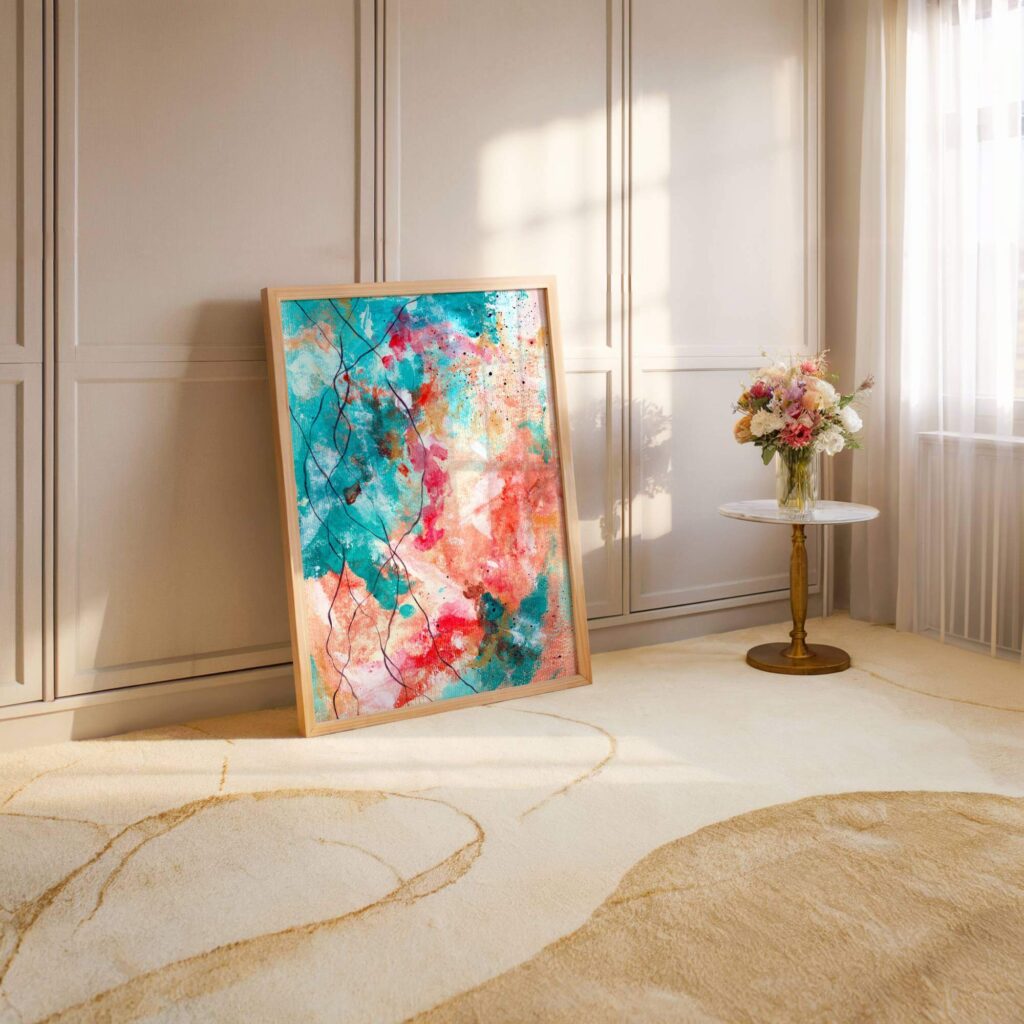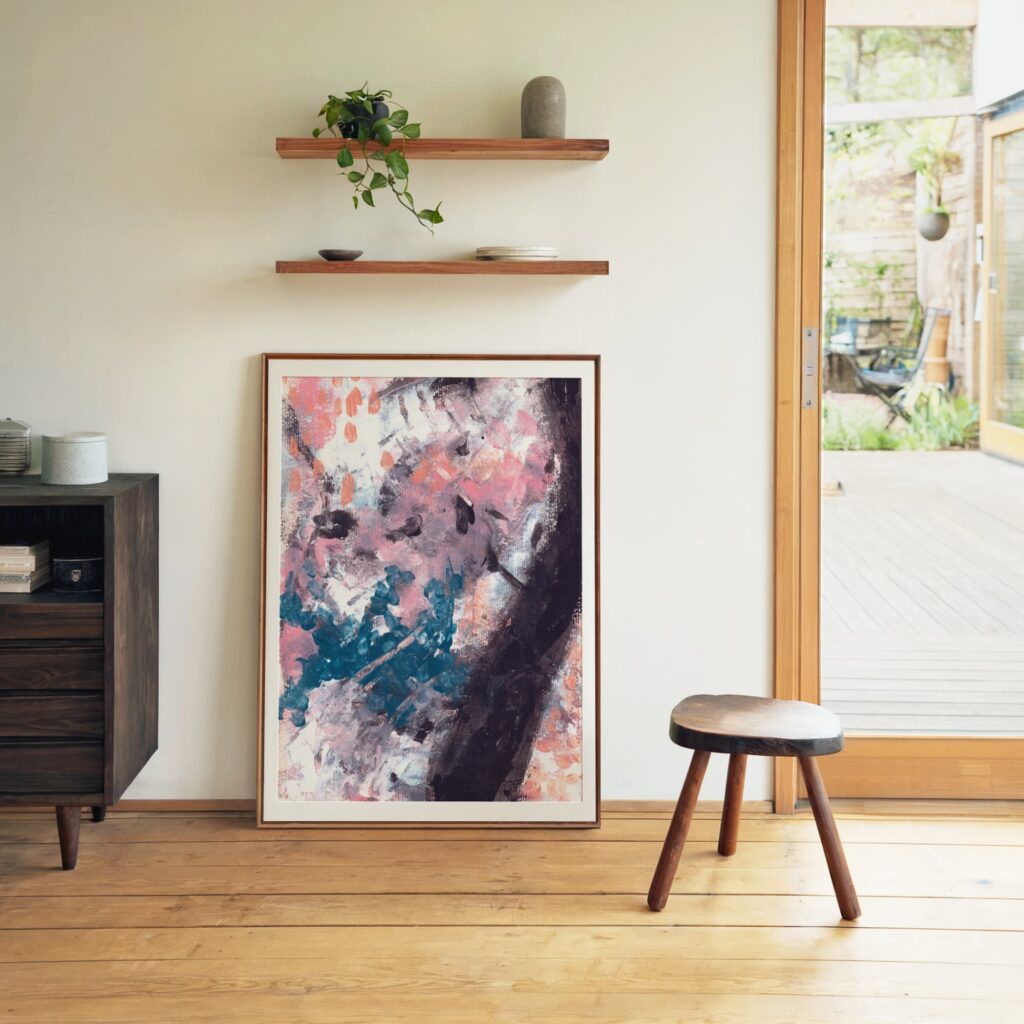Beyond the White Wall: Why Private Art Catalogues Are Replacing Public Galleries
The gallery has always been a theatre. Everyone knows the script: the spotless white walls, the over-bright lights that make everything look sterile, the staff in black trying not to hover while very obviously hovering. Champagne that tastes like it’s been poured out of a petrol station Prosecco bottle, and a small crowd doing the same dance they’ve done for decades, glance at the wall, glance at each other, check who’s making notes on the clipboard, pretend you’re not working out who might buy what.
For a long time, that theatre was the accepted way of doing things. If you wanted to be considered a serious collector, you went along with it. You showed up at the openings, you nodded through the curatorial waffle, and you played the part. If you were lucky, you left with something under your arm. If you were very lucky, you left with your name mentioned in the write-up the next day.
But that model is wearing thin. Collectors have started to realise that the gallery isn’t really about them, it’s about the performance. It’s about being seen. And being seen is no longer the currency it used to be. Privacy has overtaken visibility as the new form of status. The collectors who actually matter aren’t rushing to be photographed under white lights. They’re making decisions quietly, in private, on their own terms.
That’s where private catalogues come in. They don’t pretend to be neutral stages or sacred temples. They’re not built for spectacle. They’re built for collectors who know what they want: to see the work without the theatre, to decide without the pressure, and to buy without announcing it to anyone else. A catalogue is stripped of performance. It’s a private encounter between the collector and the work. And that’s why it makes sense that catalogues are steadily replacing galleries as the serious collector’s first choice.
The Collector’s Vault is one version of this shift. It doesn’t sit on a public shop page. It doesn’t try to draw people in with hype or events. It’s private, available on request, and designed for people who already understand what they’re looking for. It holds around thirty works, all pulled from my archive, all produced to collector-grade standards, and all carrying the weight they need to stand in serious collections. No fanfare, no stage directions, no plastic champagne flutes. Just the work, and you.
The point of this article isn’t to declare that galleries are obsolete. They’re not. But they are no longer the default way collectors engage with art. For people who value stillness, discretion, and resonance over performance, the private catalogue has become the more intelligent choice. And if you’ve ever felt that the white wall was more about appearances than art, you’ll already understand why.


The Gallery as Theatre
Walk into almost any gallery and you’ll notice the same choreography. The white walls are meant to say “neutral,” but really they say “don’t touch.” The silence is meant to suggest reverence, but mostly it makes people self-conscious about how long they’re standing in front of each piece. Staff circle discreetly, but never quite disappear. Everyone knows the roles they’re supposed to play: the collector pretending not to look at the price list, the artist pretending not to care about the price list, the gallerist pretending this is about anything other than the price list.
It’s theatre, and for a long time it worked. The performance gave buyers the sense they were part of a ritual. But once you’ve seen enough of it, the illusion cracks. You realise you’re not being invited into intimacy with the work; you’re being cast as part of a spectacle designed to reinforce status. The white walls aren’t there to elevate the art. They’re there to remind you that you’ve stepped into someone else’s carefully controlled stage set.
Collectors are supposed to enjoy this ritual, but the truth is, many don’t. They tolerate it because they’re told this is how serious buying is done. You turn up, play your part, signal you belong, and leave lighter in the wallet but heavier in social capital. But the actual decision, the personal moment where you decide whether a work resonates enough to live with, gets buried under the performance. That’s the part that really matters, and it’s the part most galleries manage to obscure.
It’s not just collectors who lose out here. Artists lose, too. Work is shown in a space that treats it like a prop rather than something that belongs in a real environment. Lighting is harsh, context is stripped, and atmosphere is replaced with sterility. The piece you see on the wall might not even feel the same once you live with it. But in the gallery theatre, that doesn’t matter. What matters is that someone bought it before the curtain fell.
This is why so many serious collectors are tired of the act. They don’t want to be observed while they make decisions. They don’t want to signal anything to anyone else. They don’t want to buy under fluorescent lights just to prove they can. They want the art, not the theatre. And once you’ve seen that clearly, it becomes hard to step back into the performance without feeling like you’re being forced into a costume that doesn’t fit anymore.
Theatre works if what you want is spectacle. But if what you want is resonance, it’s the wrong stage. That’s why private catalogues are starting to feel like the more intelligent alternative. No stage lights. No script. No audience. Just you and the work, in an encounter that belongs to you alone.
Why Privacy is the New Status
There was a time when the height of status was being seen at the right opening. Your name in the catalogue, your face in the room, your photo in the back pages of a magazine with a glass of champagne in hand. Visibility was the point. If people knew you were there, if they saw what you bought, your place in the pecking order was secured.
That idea feels tired now. In most luxury markets, the real currency isn’t visibility anymore, it’s privacy. The collectors with the strongest positions aren’t rushing to get their purchases announced. They’re the ones who move quietly, without the need for validation. Their homes aren’t photographed for magazines. Their names aren’t attached to press releases. They don’t need to prove anything. And that’s exactly the appeal of private catalogues.
A catalogue lets you step out of the spectacle. You’re not browsing with an audience. Nobody’s clocking which pieces you paused in front of. You’re not being tracked or steered. You look, you decide, you buy, and the whole process remains yours alone. That discretion carries more weight than another round of gallery photos ever could. In a culture where everything is designed to be shared and broadcast, the refusal to perform has become the strongest signal of all.
This is the quiet power of something like the Collector’s Vault. It doesn’t try to advertise itself to the masses. It doesn’t need to. It sits there, available only to those who request it, and it offers a level of discretion that matches what high-end collectors are actually looking for. You enter on your own terms, not when a gallery decides to unlock its doors for the next cycle of openings. That shift, from being told when to show up to deciding when you want to engage, is a fundamental change in how status is understood in collecting.
What was once about being seen is now about not needing to be. Privacy is the marker of intelligence. And catalogues, by design, make that possible.
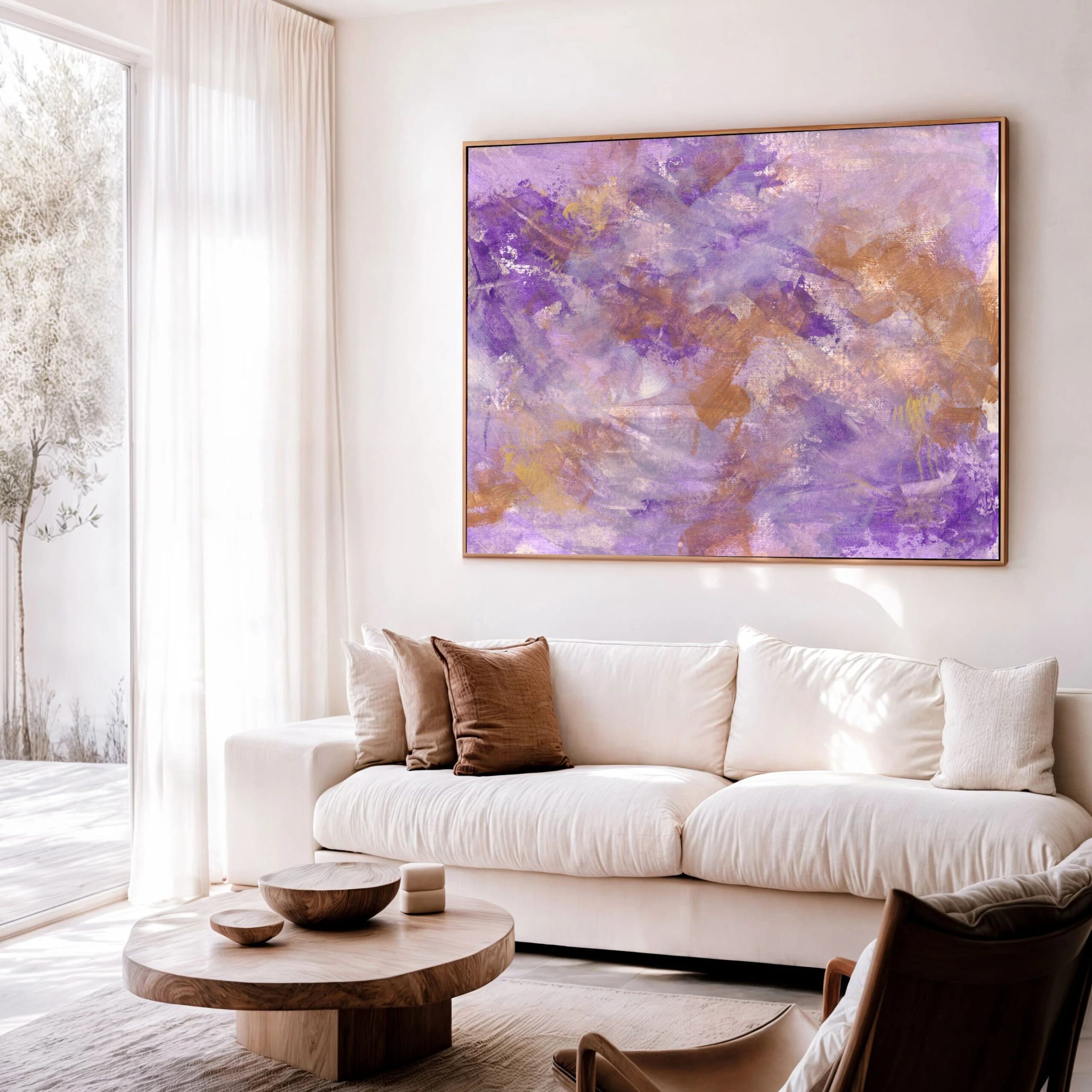

The Problem with Performance-Driven Buying
Buying art in a gallery isn’t really about buying art. It’s about performing the role of someone buying art. The whole environment makes that obvious. You walk in, and suddenly you’re part of a scene where everyone is watching everyone else. The staff are watching to see if you’re serious. Other collectors are watching to see if you’re competition. Even the artist, if they’re there, is watching in a way that makes you feel like you’re auditioning for the right to own their work.
It’s an odd way to make a decision about something so personal. Choosing a piece of art should be about resonance, about whether the work does something in you, and whether you want that feeling to live in your space. But the gallery setting rarely gives you space for that clarity. Instead, it adds noise. There’s pressure to signal interest without seeming too keen, to ask the right questions, to perform knowledge without revealing uncertainty. It becomes a game of appearances, and the actual encounter with the work gets diluted in the process.
Collectors know this. Even the ones who play along will admit, once they’re outside the white walls, that the whole thing feels more like a stage than a genuine experience. You’re not choosing art, you’re playing your part in a script. And that script is designed to funnel you toward a purchase, not because the work is right, but because that’s the expected ending to the performance.
A private catalogue strips all of that away. There’s no one hovering, no audience, no pressure to ask the right questions. You don’t have to perform interest or manage impressions. You either connect with the work or you don’t. You take your time, you make your decision, and it belongs to you. That’s it. No curtain call, no applause, no subtle choreography to navigate. Just the work, and your response to it.
For collectors who are serious about building collections that mean something, this difference is everything. Performance-driven buying creates distraction. Private buying creates clarity. And clarity is what allows a collection to actually reflect intelligence rather than ego.
Why Private Catalogues Make Sense for Collectors
Once you take away the theatre, the appeal of a private catalogue is almost embarrassingly simple. It gives collectors what they’ve always wanted but rarely been offered: the chance to engage with the work directly, on their own terms, without distraction. That alone would be enough to make catalogues preferable to galleries, but the advantages run deeper.
The first is discretion. Collecting is a personal act, and yet galleries insist on making it public. Everyone knows who turned up, who looked at what, who asked the price. It’s a strange kind of transparency that benefits everyone except the buyer. A private catalogue fixes that by default. There’s no audience, no list of who came through the door, no performance. You browse privately, you decide privately, and your purchase remains yours until you decide otherwise.
The second is control. With a gallery, you’re bound by their schedule. You see what they choose to show when they choose to show it. Private catalogues remove that gatekeeping. You request access when it suits you, and you step into a curated body of work without waiting for an invitation. That shift from their timetable to yours changes everything about the experience.
Then there’s the breadth. Catalogues usually draw from an archive rather than whatever happens to be hung on a wall this month. That gives collectors a sense of continuity and coherence they won’t find in the episodic rhythm of gallery shows. You see a fuller spectrum of the practice, not just a curated slice staged for a season.
And finally, integrity. A well-constructed private catalogue isn’t a dumping ground. It isn’t a warehouse list. It’s a selection made with the same care as any exhibition, sometimes more. When done properly, it holds together as a body of work. The Collector’s Vault works this way. It’s around thirty pieces, all drawn from my archive, all produced to collector-grade standards. It isn’t there to overwhelm you with options. It’s there to give you enough range to find what resonates while keeping the whole collection sharp.
For serious collectors, all of this makes obvious sense. Privacy, control, breadth, and integrity are exactly what they need, and exactly what the gallery model fails to provide. Which is why so many are stepping away from the white wall and into catalogues instead.

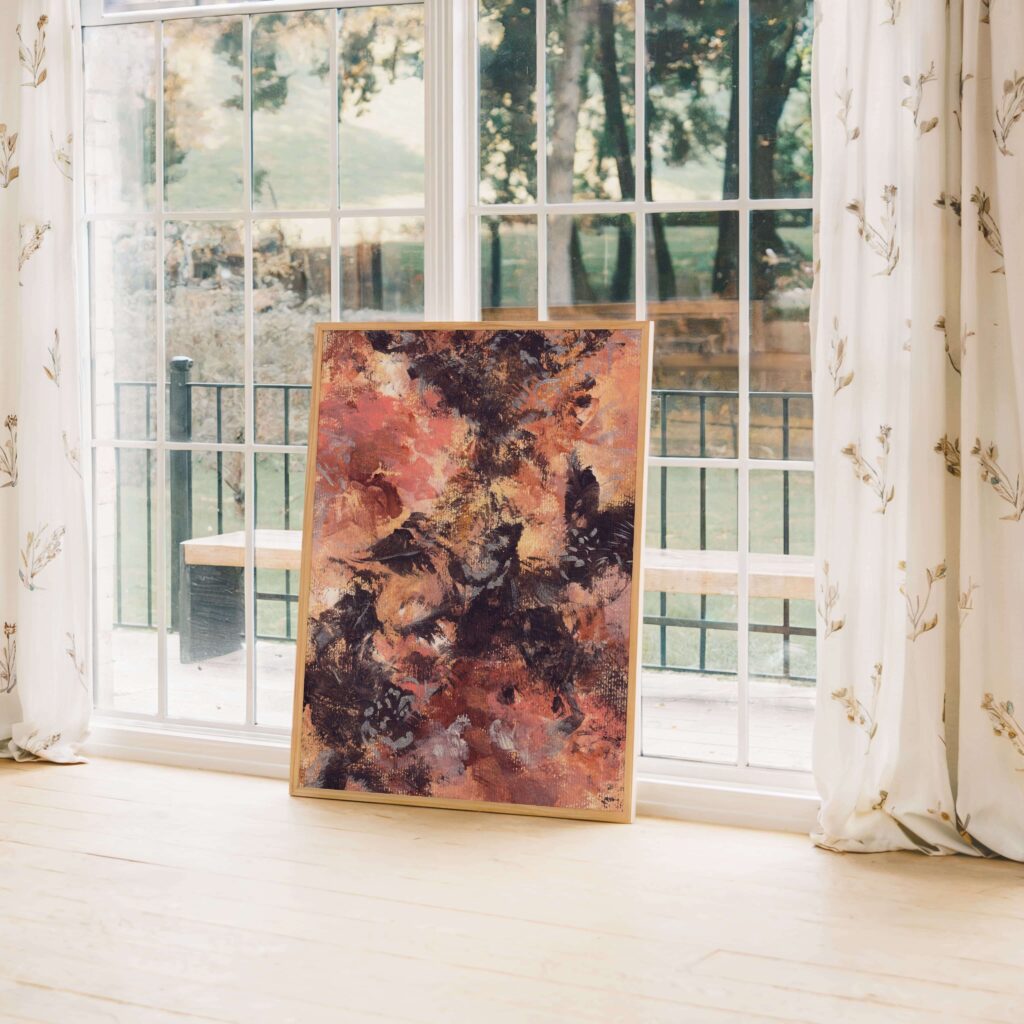
The Collector’s Vault: A Case Study
The Collector’s Vault is my own response to the problems of the gallery model. It isn’t a public shop page, and it isn’t trying to imitate a gallery online. It’s a private catalogue: quiet, direct, and deliberately restrained. Inside are around thirty works, all drawn from my archive, each one produced to collector-grade standards. Prices range between £1,500 and £8,000. Every piece is a canvas print, made with the same attention to presence and durability that I’d expect in my own space.
What makes the Vault work is its privacy. You don’t stumble across it by accident. You request access. That single step changes the whole dynamic. Instead of being pushed out into the world as inventory, these works sit quietly, waiting for the right collector to engage. There’s no fanfare. No artificial urgency. Just a catalogue that respects the collector’s intelligence.
The Vault also creates continuity. Galleries present art in seasonal bursts: this month’s show, next month’s theme. The result can feel fragmented, like you’re only ever seeing a slice of a practice out of context. The Vault avoids that by pulling directly from the archive. You get a broader sense of the work, not just the fraction that happens to suit a curatorial storyline. It’s a body of pieces that make sense together, yet each one holds its own ground.
For some collectors, the Vault becomes the backbone of their collection. For others, it works alongside more personal options. A commission like Soul on Canvas offers something intimate, built specifically from an emotional reflection. The Vault offers presence-led works from the archive, available without needing to wait for a gallery to stage them. Both routes exist, but they don’t compete. They complement each other.
In practice, the Vault functions the way serious collecting should: quietly, without noise, without unnecessary layers between the work and the person it’s meant for. It replaces the theatre of the gallery with something more intelligent, a direct encounter, on your own terms. And for collectors who value that kind of clarity, it’s often the only model that makes sense anymore.
How Private Catalogues Redefine Exclusivity
Exclusivity in the gallery world has always been about access to a room. Who got the invite to the private view, who managed to get on the right list, who the gallerist chose to whisper the price to. The whole thing turned exclusivity into a social game rather than anything to do with the work itself. You weren’t just buying art; you were buying permission to be seen in the right circle.
Private catalogues flip that logic. The exclusivity isn’t about showing up in public. It’s about controlled access handled quietly. Instead of competing for visibility, collectors step into catalogues on their own terms. The Vault doesn’t need velvet ropes or name checks at the door. The exclusivity comes from its boundaries: it’s private, it’s request-only, and it isn’t for people who are just browsing for decoration. That is what makes it meaningful.
This kind of exclusivity is more intelligent because it doesn’t collapse into performance. You don’t gain status by being photographed in the right room. You gain it by having the discernment to choose works without fanfare. That shift, from public display to private resonance, is what makes catalogues attractive to high-end collectors. It replaces a competitive game with quieter confidence.
And unlike galleries, where exclusivity is often inflated with theatrics, catalogues don’t need to manufacture scarcity. The scarcity already exists in the integrity of the curation. The Vault contains around thirty works. That’s it. It isn’t pretending to be endless, and it isn’t trying to sell volume. The exclusivity isn’t constructed; it’s real.
For collectors who have grown tired of performing their way into ownership, this version of exclusivity feels more aligned. It’s not about who saw you buy. It’s about what you choose to live with. And that is a far stronger marker of taste than another glass of flat champagne at a white-wall opening ever could be.

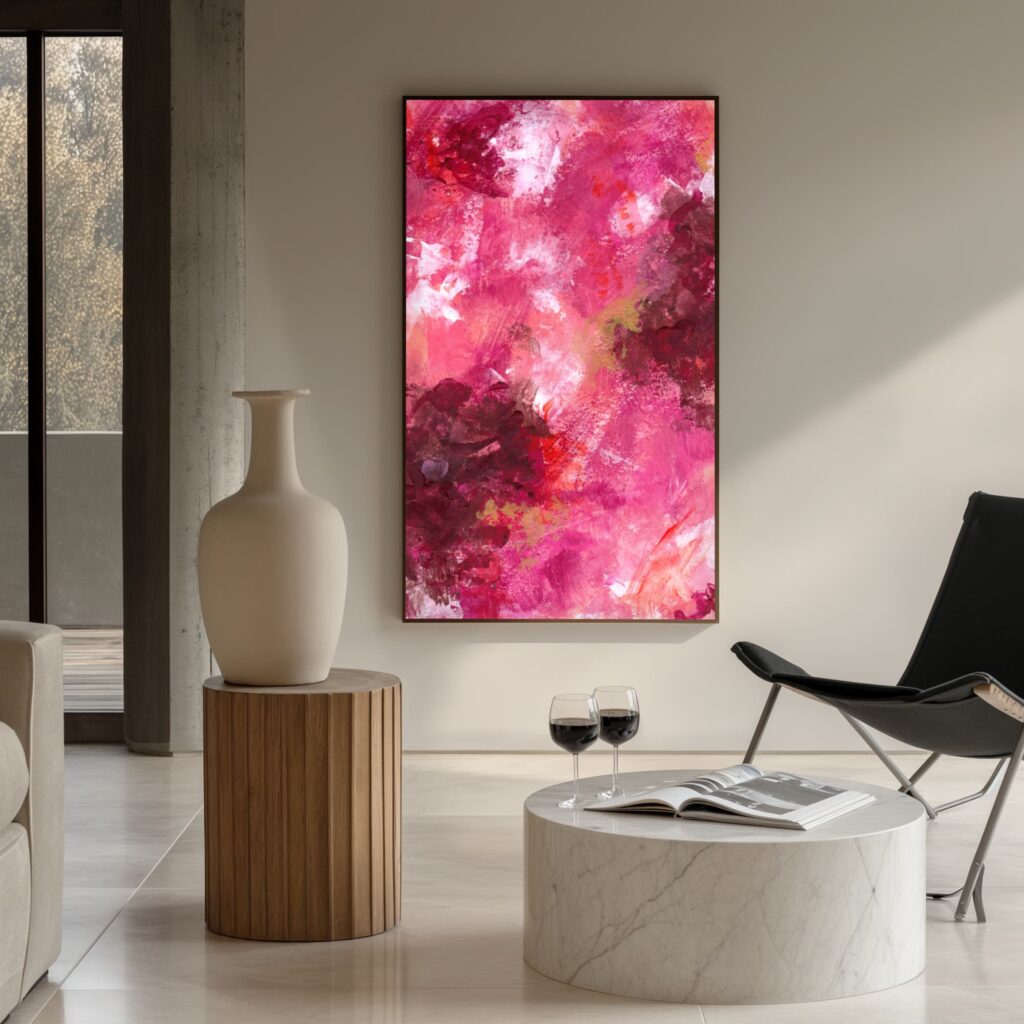
The Role of Technology
One of the reasons private catalogues work so well now is that the technology finally matches the standard collectors expect. Ten years ago, viewing art digitally felt like a compromise. Images were flat, colours were unreliable, and everything looked like it had been compressed within an inch of its life. Collectors had to squint at thumbnails and then trust that what arrived in front of them would feel the same. It rarely did.
That gap has narrowed. High-resolution imaging, colour-accurate capture, and platforms that can handle detail without stripping it away mean private catalogues don’t feel like poor substitutes anymore. They’re not a flick-through of washed-out JPEGs. They’re detailed, precise, and often give a clearer sense of an archive than a gallery show ever could. In a gallery, you’re at the mercy of their lighting. Online, you see the work as it’s meant to be seen, with fidelity that doesn’t distort.
The technology isn’t just about viewing, either. It’s about access. Catalogues can be built so that they remain private, request-only, and still seamless to use. The Collector’s Vault functions this way: discreet, easy to step into once you have permission, but invisible to anyone who isn’t supposed to be there. That balance of discretion and efficiency would have been unthinkable twenty years ago. Now, it’s the baseline.
For collectors, this matters because it removes the last real excuse for why the gallery model had to dominate. The gallery could once claim it was the only place you could experience work “properly.” That isn’t true anymore. With the right technology, private catalogues can deliver the same, often better, clarity, without dragging you through the performance.
And as technology keeps improving, that gap will only widen. Virtual access, more refined capture, and better tools for collectors to visualise how work sits in real spaces will continue to erode the old idea that you have to stand in a white room to understand a piece. The gallery has lost its monopoly. The catalogue, when done properly, is already doing the job better.
Why Designers Prefer the Catalogue Model
Interior designers rarely have the luxury of waiting around for the next gallery show to see what might be available. Their job is to create spaces that feel complete, and that means they need access to art in a way that’s reliable, coherent, and practical. A gallery can only ever show what happens to be on its walls that month. That’s fine for spectacle, but it doesn’t help someone trying to source works that connect across multiple rooms.
Private catalogues solve this problem. They give designers continuity. Instead of being presented with a handful of pieces tied to a temporary exhibition, they see an archive. They can trace themes, choose scale intelligently, and build cohesion across a space without being bound by whatever narrative a gallerist has decided to stage. For designers working in luxury contexts, private homes, offices, and retreats, that consistency is invaluable.
The Collector’s Vault works particularly well in this respect. Because it draws from my archive, it already carries continuity. The works belong together even as they stand alone. A designer can select one for a boardroom and another for a private study, and the pieces will connect without feeling repetitive. It’s the kind of coherence you don’t get from hopping between seasonal gallery shows.
There’s also the matter of practicality. Designers need to show clients options. They need to plan installations, confirm sizes, and make sure the pieces align with the feel of the space. Galleries, with their emphasis on theatre, often resist this kind of flexibility. Catalogues, by contrast, are built to be useful. They don’t just show what’s on the wall now; they show what exists and can be placed with intention.
It’s no surprise that many designers quietly prefer the catalogue model. It makes their work easier, it gives them better material to work with, and it respects the intelligence of both the designer and the client. Galleries may still dominate the PR side of art buying, but when it comes to the practical act of creating a space that feels whole, catalogues are where the real work gets done.
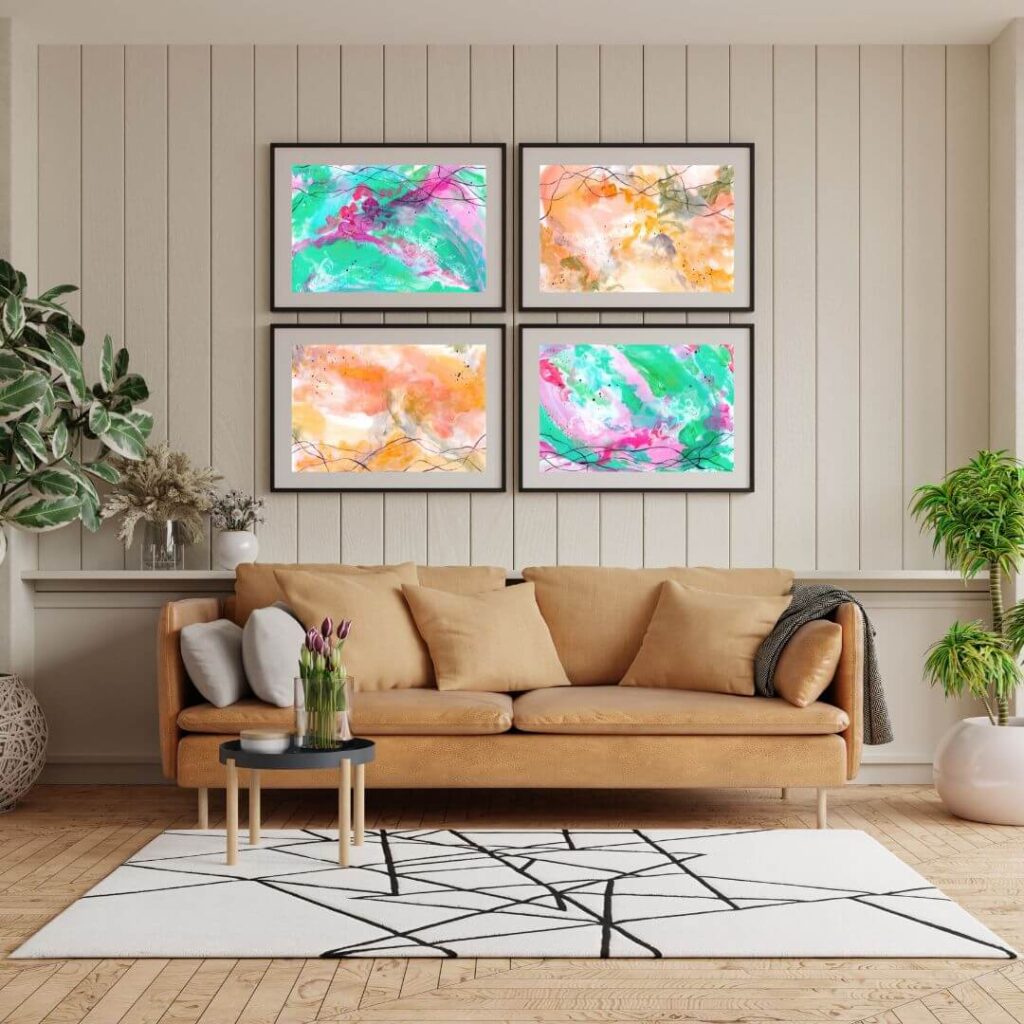

Misconceptions About Private Catalogues
For something that makes so much sense, private catalogues still attract the same tired misconceptions. The most common is that they’re impersonal, a kind of digital warehouse where works are dumped online with little thought. That perception exists because some examples really are like that: endless thumbnails, no curation, no sense of why anything belongs together. But that’s not a problem with the model. That’s a problem with poor execution. A serious catalogue isn’t a warehouse. It’s a carefully curated archive, often more coherent than a gallery show precisely because it isn’t trying to tell a seasonal story.
Another misconception is that catalogues are somehow “less exclusive” than galleries. That idea collapses under even the smallest amount of scrutiny. A gallery invites hundreds of people to a private view and calls it exclusive. A catalogue sits quietly, accessible only by request, and is seen by a fraction of that number. Which of the two sounds more private? Which of the two gives collectors actual control over who sees what? Exclusivity in catalogues isn’t a marketing trick. It’s structural.
There’s also the suspicion that catalogues are simply online shops in disguise. And again, some are. But when handled with integrity, a catalogue is the opposite of a shopfront. It isn’t shouting for attention or chasing volume. It’s deliberately restrained. The Collector’s Vault is a case in point: thirty works, no more, no less, curated for presence rather than variety for variety’s sake. That’s not a shop, it’s a private offering.
What all of these misconceptions have in common is that they’re carried by people who haven’t actually used a proper catalogue. They’re stuck in the gallery script, assuming that if something doesn’t come with bright lights and an opening night, it must be lesser. But the collectors who’ve stepped into catalogues already know better. They’ve seen the difference. And once you’ve experienced that level of discretion and clarity, it’s hard to take the myths seriously.
The Future of Collecting is Private
The gallery model won’t disappear. There will always be white walls, opening nights, and the familiar theatre for people who still enjoy that kind of ritual. But it no longer defines how serious collecting happens. The future belongs to quieter models, and private catalogues are already proving it.
Collectors are becoming more private, not less. They’re no longer chasing visibility. They’re chasing resonance, stillness, and discretion. Those qualities can’t be staged under gallery lights. They can only be built into structures that respect privacy from the start. A catalogue like the Collector’s Vault doesn’t need to fight for attention. Its strength lies in the fact that it doesn’t.
This shift isn’t a temporary adjustment. It reflects the wider direction of culture. Luxury has been moving away from spectacle for years. The most desirable travel experiences are the ones no one else knows about. The most valued spaces are the ones without a public footprint. The most intelligent purchases are the ones made without performance. Art is simply following the same trajectory.
In ten years, nobody will find it unusual that serious collectors prefer to step into private catalogues rather than wait for the next gallery season. They’ll wonder why it took so long to get here. And while galleries keep trying to manufacture exclusivity with invitations and champagne, catalogues will keep doing what they already do best: giving collectors access to serious work, quietly, on their own terms.
The future of collecting isn’t about being seen. It’s about having the intelligence not to need to be. That’s why catalogues will outlast the theatre. They fit the mood of now, and they’ll fit the mood of what comes next.
My Offerings
Whether you’re a private collector, a wellness-focused brand, or a designer sourcing for a high-calibre project, I offer art that resonates deeply and subtly.

Collector's Vault
Canvas prints from the archive, made with emotional resonance and sustainable materials for spaces seeking depth.
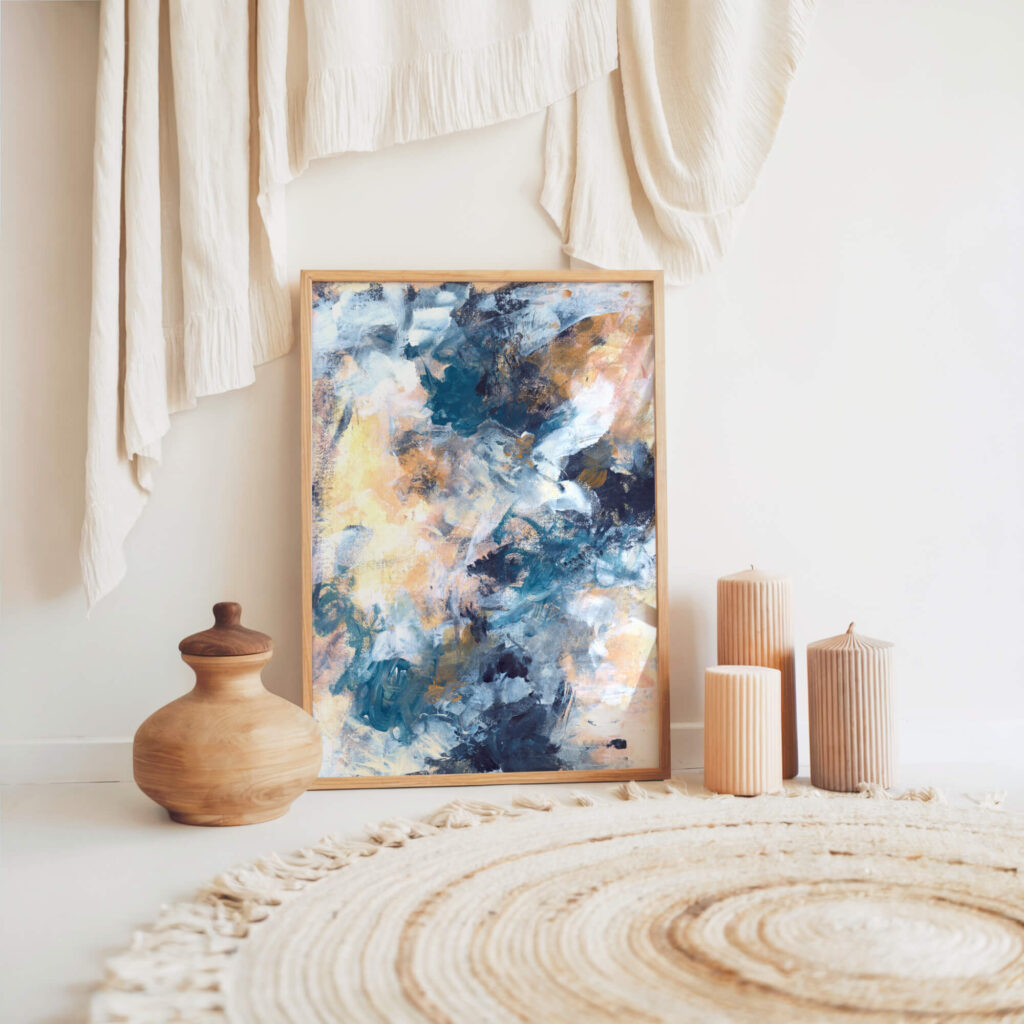
Capsule Commission
Created privately, one at a time, through stillness and reflection. Limited spaces each season to preserve depth and intimacy.
The Last 10
Ultra-limited, hand-embellished editions. No more than ten will ever exist. Made to ground, steady, and hold presence at the highest tier.
Conclusion: Why the Vault Exists
Private catalogues aren’t a gimmick. They’re the natural response to a market that spent too long mistaking performance for substance. Galleries built their identity on being the only stage in town, but collectors have realised they don’t need a stage at all. They need clarity, privacy, and the freedom to choose art without being cast in a role.
That’s why the Collector’s Vault exists. Not as an imitation of a gallery, and not as a public shop. It exists to give collectors a way of stepping directly into a body of serious work without distraction. No spotlight, no clipboard, no performance. Just the work, presented with the same integrity it was created with, waiting quietly for the right person to connect with it.
Some collectors will always enjoy the theatre of galleries. That’s fine, there will always be stages for them to play on. But for those who care more about resonance than performance, more about living with art than being seen with it, private catalogues are the more intelligent choice. They’re not shouting for attention. They don’t need to. Their strength lies in their quietness.
If that’s the kind of collecting that resonates with you, the Vault is there. Not in public view, not advertised with fanfare, but available if you know how to ask. That’s the point. Some things are best found quietly.
